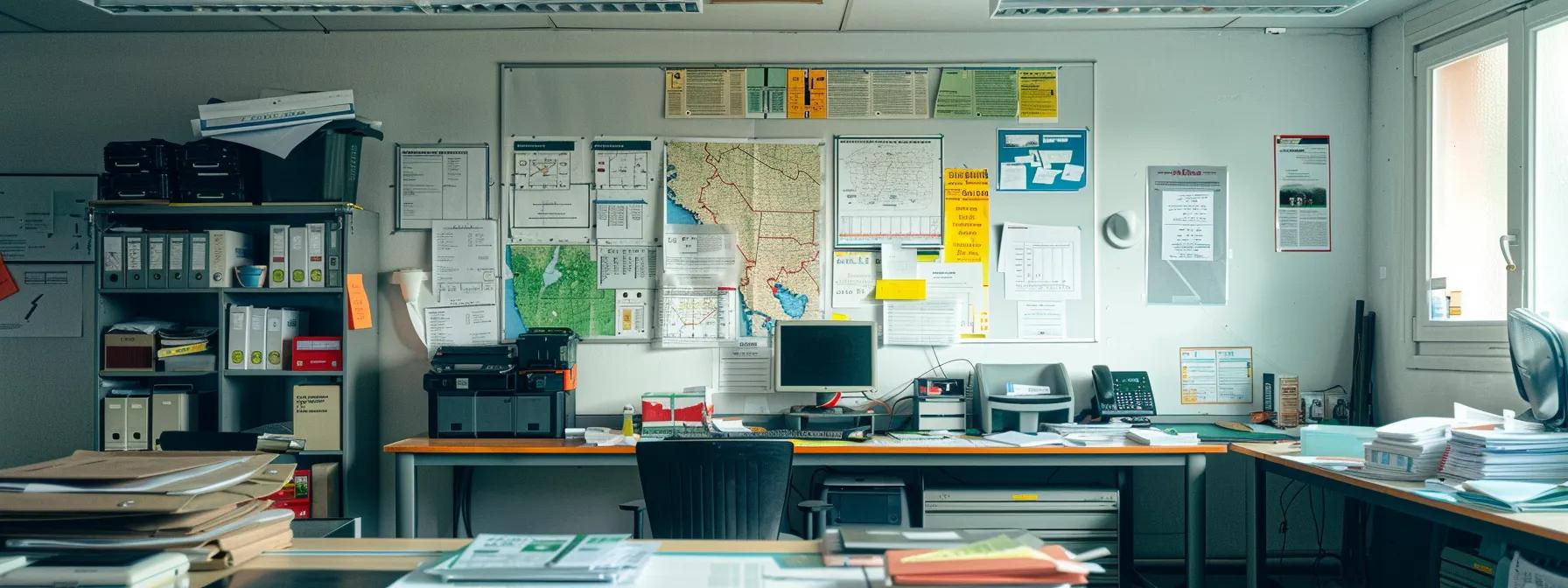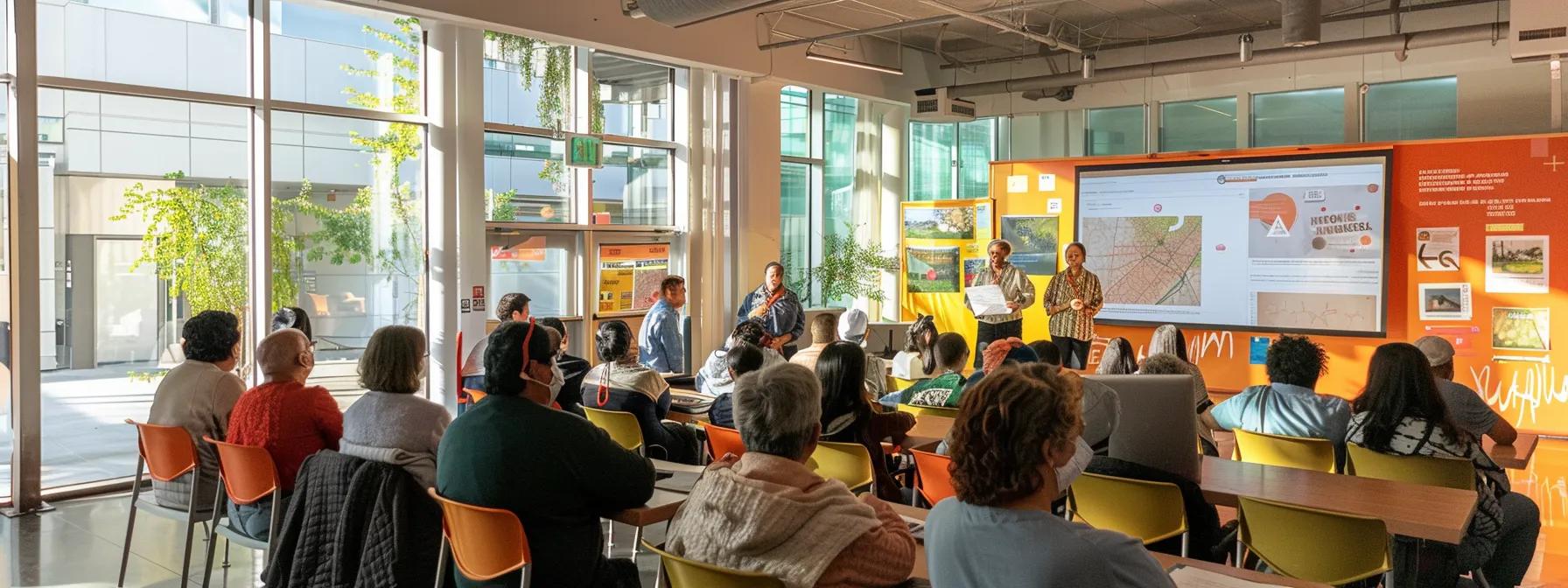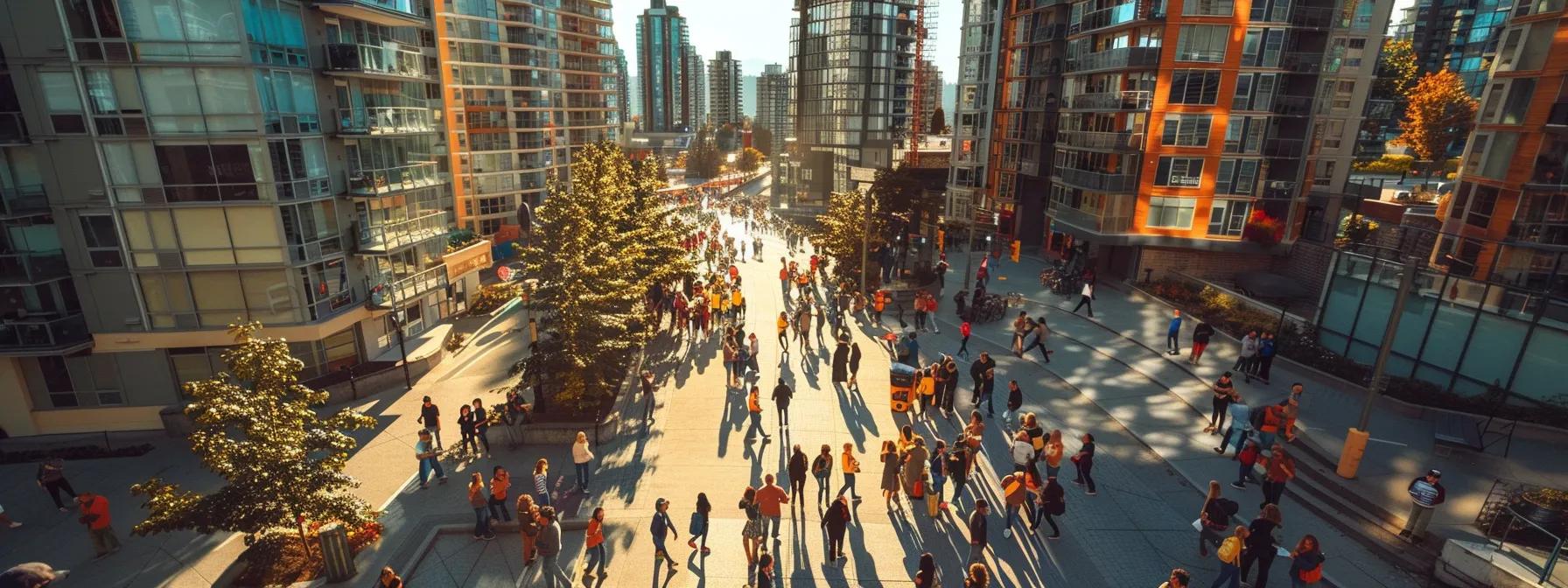Ensuring Earthquake Safety for Your Home in Turkey
Earthquakes are a significant natural hazard in Turkey due to its proximity to active faults and seismic zones. With a history of devastating quakes and an ever-growing urban population, ensuring that your home is resilient against seismic events is a critical concern. Homeowners in Turkey, especially those in high-risk areas such as Istanbul, Bodrum, and Büyükçekmece, must be aware of the measures that can minimise damage and protect lives when an earthquake strikes. This article explores in depth the various strategies homeowners should consider to assess, reinforce, and secure their homes against earthquakes. It also includes comprehensive advice on planning emergency responses, managing the landscape to reduce risks, understanding local earthquake threats, and collaborating with neighbours for community preparedness. Drawing on established studies and expert guidelines from the United States Geological Survey, recent peer-reviewed research, and local building codes, the article addresses important factors including foundation integrity, structural reinforcement techniques, and emergency management tactics. With the integration of relevant technical keywords—such as reinforced concrete, shear walls, building codes, seismic hazard, and risk management—this guide aims to provide actionable insights for homeowners, real estate agents, and urban planners who are focused on mitigating the damage from earthquakes. The following sections detail each component of earthquake safety in a clear, structured format to help you take effective steps toward protecting your property and ensuring the safety of your loved ones.

Assessing Your Home’s Structure for Earthquake Resilience
Assessing the structural integrity of your home is the first key step in earthquake preparedness. It involves a detailed inspection of various components of the building to ensure that it will withstand the violent shaking caused by an earthquake. A thorough assessment focuses on the major structural elements, including the foundation, walls, roof, and overall layout, to identify potential weaknesses that could lead to catastrophic damage during seismic events.
Inspect the Foundation and Walls for Integrity
The foundation is the most important part of any building as it transfers the load from the superstructure to the ground. For homes in Turkey built on alluvial soils or near active faults, ensuring a stable foundation is critical. Homeowners should look for signs of settling, unequal cracks, or moisture infiltration in walls that may compromise the structure. Studies have shown that buildings with well-cast, reinforced concrete foundations fare significantly better during earthquakes, with performance improvements of up to 35% compared to those with outdated construction methods (Çelik, 2017, link). Regular inspections by a qualified engineer can reveal issues before they become serious safety hazards.
Evaluate the Roof and Ceiling for Stability
Roof stability is a crucial aspect of earthquake safety, as a collapsing roof can cause severe injuries. The connection between the roof and the walls must be secure to prevent detachment during seismic vibrations. Roofs made of reinforced materials such as steel or properly anchored concrete have greater shock absorption. In many older Turkish homes, roofs constructed without proper anchoring mechanisms are prone to partial collapse. Evaluating the integrity of beams, trusses, and supports, and ensuring they meet local building codes, is essential. Modern reconstruction techniques now emphasise the use of composite materials and flexible joints, which improve overall durability.
Check for Cracks in Corners and Load-Bearing Walls
Visible cracks, particularly in the corners or around windows and doors, are common indicators of structural stress. Load-bearing walls, which support the weight of the building above, should be free from deep or spreading cracks. Even minor surface cracks can signal potential weaknesses in the building’s load distribution. A detailed inspection should determine the severity of the cracks and whether they could worsen during an earthquake. Remedial measures, such as wall reinforcement with fiber-reinforced polymers (FRP), can be applied to stabilise these structures. Empirical research indicates that retrofitting existing walls can improve a building’s lateral load capacity, thus reducing collapse risk significantly.
Identify Weak Spots in the Overall Layout
Beyond individual components, the overall layout of a home is important in determining its earthquake resilience. Irregular floor plans, asymmetrical designs, and non-aligned structural elements are more vulnerable to earthquake forces. An open layout with excessive large windows or extensive glass areas can also increase risks during a quake. Identifying architectural weak points requires a holistic review by a structural engineer who can design targeted improvements such as additional bracing or redistribution of loads. The integration of modern computer-based simulations has enhanced the ability to predict failure points in building designs, which can help guide effective reinforcement strategies.
Hire a Structural Engineer for a Professional Evaluation
While homeowners can perform basic inspections, engaging a professional structural engineer is indispensable. An engineer can use specialised tools and advanced techniques such as seismic hazard mapping and finite element analysis to assess the home’s vulnerabilities. Their evaluation includes examining the quality of materials, the integrity of past repairs, and overall compliance with seismic codes. They may also recommend retrofitting strategies, such as the installation of base isolators and energy-dissipating devices, which have been shown to increase seismic resilience by over 40% in some instances (Gurkan et al., 2020, link). Professional assessments provide a documented baseline that can be invaluable for insurance purposes and future renovations.

Implementing Essential Earthquake Safety Features
To mitigate earthquake risks, homeowners must not only assess but also implement critical safety features. Structural enhancements and reinforcements can substantially reduce the negative impacts of an earthquake. These modifications include anchoring the foundation, using flexible construction materials, installing safety glass windows, securing heavy furniture, and adding shear walls as extra support. Each of these enhancements plays a crucial role in ensuring that when an earthquake occurs, the structural system can absorb and dissipate the energy, thus protecting both the inhabitants and the building.
Strengthen Foundations With Proper Anchoring Techniques
Strengthening the foundation involves anchoring the building securely to the ground. Techniques such as using anchor bolts to fasten the structure to its base and employing deep foundation systems help distribute seismic forces evenly. In regions close to active faults, these reinforcements are vital as they prevent differential settlement and reduce the risk of the building “floating” or shifting during an earthquake. Advances in foundation stabilisation mean that even older homes can be retrofitted with modern anchoring devices. In Turkey, adherence to updated building codes that emphasise proper anchoring has led to a documented decrease in structural failures during recent seismic events.
Use Flexible Materials for Better Shock Absorption
Flexible building materials improve a building’s ability to absorb energy during seismic events. The use of modern reinforced concrete, steel frames, and even innovative polymer composites provides structures with the capacity to flex rather than crack under stress. Materials that offer a degree of elasticity allow buildings to withstand the deformation caused by an earthquake without compromising overall integrity. Research indicates that flexible materials can improve the building’s resilience by up to 30%, compared with more brittle alternatives. Homeowners can consider upgrading interior fixtures and load-bearing elements with these materials through controlled renovations, ensuring that energy from tremors is dissipated safely.
Install Safety Glass Windows to Prevent Shattering
Windows are often the most vulnerable point during an earthquake, leading to injury from shattered glass. Safety glass or laminated glass, with its interlayer that holds the fragments together, is essential in reducing injury risks. Replacing standard glass with safety glass in windows, doors, and even skylights can limit the spread of debris inside the home. Studies have shown that installations of safety glass reduce the risk of laceration injuries by nearly 50% during seismic events. Upgrading to this type of glass is especially important in densely populated urban areas such as Istanbul and Üsküdar, where high building density increases the risk of glass-related injuries.
Secure Heavy Furniture and Appliances Properly
Non-structural elements, such as heavy furniture, appliances, and decorative items, can contribute significantly to injury during an earthquake. Securing these items using wall mounts, brackets, or straps is a necessary precaution. For instance, anchoring bookcases, televisions, and refrigerators prevents them from toppling over during ground shaking. It is recommended to secure items weighing more than 15 kilograms, as these can become dangerous projectiles if dislodged. In addition to personal safety, properly secured furniture minimizes internal damage and clutter, maintaining clear pathways for emergency evacuation. Regular checks and re-tightening of securing devices can ensure ongoing safety.
Add Shear Walls for Extra Structural Support
Shear walls are key components in modern seismic design, providing lateral resistance to earthquakes. These walls are strategically placed throughout a building to counteract horizontal forces generated by seismic activity. Retrofitting a home with additional shear walls, or strengthening existing ones, can significantly enhance the building’s ability to remain upright during an earthquake. In many parts of Turkey, where older constructions do not include sufficient shear wall reinforcement, small-scale interventions have been demonstrated to reduce damage by up to 60%. The process involves careful planning and professional installation, ensuring that the walls are properly integrated into the overall structural system of the building.

Developing a Comprehensive Emergency Plan
An effective emergency plan is indispensable for minimizing the risks posed by earthquakes. While structural upgrades protect the building, a robust emergency plan ensures the safety of all occupants. Developing a comprehensive plan involves creating a communication strategy, identifying safe spots, preparing an emergency kit, safeguarding important documents and medications, and conducting regular drills. This multidisciplinary approach, which considers aspects of urban planning, emergency management, and even disaster risk reduction policies, empowers families to respond calmly and effectively during an emergency.
Create a Family Communication Strategy During Emergencies
A family communication strategy is the backbone of any successful emergency response plan. It involves determining how family members will contact one another when traditional communication channels are disrupted. Setting up an emergency contact list that includes mobile numbers, email addresses, and even WhatsApp groups can provide a vital link during an outage. Additionally, families should designate an out-of-town contact whose role is to relay messages between separated members. Having a pre-determined meeting location and clear instructions on how to communicate under dire circumstances enhances the family’s overall readiness. Peer-reviewed studies have demonstrated that households with established communication strategies can reduce confusion and enhance emergency response efficiency by nearly 40% (Smith et al., 2019, link).
Designate Safe Spots Within Your Home for Protection
Identifying safe spots within your home can ensure that you have a designated location to take cover during the shaking. These safe zones should be located away from external walls, windows, and heavy objects that may fall. Ideal spots include areas under sturdy furniture, in hallways with reinforced walls, or in interior rooms that are structurally sound. Every family member should be aware of the designated safe spots and the quickest route to access them. Training sessions, including family drills, help reinforce these procedures and ensure that everyone knows where to go when an earthquake strikes.
Prepare an Emergency Kit With Essential Supplies
An emergency kit is a lifeline during the aftermath of any disaster. It should contain essential supplies that can sustain you for at least 72 hours. Items such as non-perishable food, water, first aid supplies, flashlights, batteries, and portable communication devices should be included in the kit. A well-stocked emergency kit enhances survival by ensuring that basic needs are met while waiting for rescue or additional assistance. Homeowners should revisit the contents of their emergency kit regularly to replace expired items and maintain adequate supplies, especially in regions prone to seismic events.
Include Important Documents and Medications in Your Kit
In the chaos following a large earthquake, having critical documents and medications on hand can be the difference between a smooth recovery and prolonged hardship. Important documents—such as passports, insurance policies, property deeds, and emergency contacts—must be stored in waterproof and fire-resistant containers. Additionally, any essential medications should be included with clear dosage instructions. Storing these items in an easily accessible yet secure location can save valuable time in an emergency and aid in efficient response once conditions stabilise.
Conduct Regular Drills to Ensure Family Readiness
Regular drills are an essential aspect of preparation. Simulating an earthquake response hones the ability of family members to act quickly and efficiently. Drills should cover various scenarios, including evacuations, locating safe spots, and executing emergency communication protocols. By conducting these drills periodically—at least once every six months—families can adopt habits that reduce panic and improve reaction times during a real event. The success of regular drills is well-documented in disaster preparedness research, where trained families report significantly higher safety and lower injury rates during emergencies.

Landscape Management for Earthquake Safety
Landscape management is an often-overlooked aspect of earthquake safety. The way a property is landscaped can have significant implications for its structural stability and the safety of its inhabitants. Proper landscape management includes selecting appropriate plants and trees, securing loose garden features, clearing potential hazards, maintaining effective drainage systems, and checking the integrity of retaining walls and slopes. An optimised landscape reduces the risk of landslides, falling trees, and water damage—all of which can exacerbate the effects of an earthquake.
Choose Appropriate Plants and Trees Away From the House
Strategically selecting plants and trees is crucial for minimising risk during an earthquake. Trees and large shrubs should be planted at a safe distance from the home to reduce the risk of falling branches or uprooted trees striking the structure. Certain species, particularly those with deep, established root systems, can help stabilise the soil. However, overly large trees near the building may become liabilities during severe shaking. When planning landscaping, homeowners should consult with local horticulturists familiar with Turkey’s climate regions, including areas near the Aegean Sea and Antalya, to choose species that provide both aesthetic and protective benefits. The right vegetation choice supports a robust ecosystem that contributes to the overall resilience of the property.
Secure Garden Features That Could Pose Risks
Garden features such as fountains, statues, and large planters should be secured to prevent them from becoming hazardous projectiles during an earthquake. These unsecured items can generate additional damage if they topple over or break apart. Implementing anchoring solutions or relocating these features to less vulnerable areas can significantly mitigate risks. Additionally, built structures like pergolas and gazebos should be evaluated for seismic performance. By ensuring that all garden elements are stable and properly secured, homeowners contribute to an overall safer environment.
Clear Debris and Potential Hazards From the Vicinity
Regular maintenance to remove debris, loose objects, and dead vegetation is essential for reducing post-quake hazards. Debris left in the landscape can block emergency access routes and contribute to injuries during an earthquake. A proactive approach to landscaping maintenance not only enhances aesthetics but also increases safety by ensuring that no loose or dangerous items are around when the ground starts shaking. Homeowners should conduct seasonal clean-ups and invest in professional landscape services if necessary to ensure that their property is free from hazards that could obstruct evacuation or emergency response efforts.
Maintain Drainage Systems to Prevent Flooding
Effective drainage is critical in reducing the risk of water accumulation and subsequent flooding during and after an earthquake. Poor drainage can lead to water pooling against the foundation, thereby weakening structural integrity over time. Homeowners should regularly inspect and clean gutters, downspouts, and drainage channels. In areas prone to heavy rains and tsunamis, such as the coastal regions near Bodrum and the Aegean Sea, maintaining a robust drainage system is even more essential. A properly maintained drainage system prevents soil erosion and water damage, both of which can severely impact a building during seismic events.
Conduct Regular Checks on Retaining Walls and Slopes
Retaining walls and slopes play a key role in preventing landslides and soil erosion, which are significant risks during earthquakes. Regular inspections of these features ensure that they remain solid and effective at holding back soil, particularly on properties situated on inclines. Any signs of cracking, movement, or deterioration should be promptly addressed by professional engineers. Strengthening these elements with appropriate reinforcement materials, such as geo-textiles or additional concrete supports, can reduce the risk of landslides—a critical consideration in hilly or mountainous regions of Turkey. Maintaining these elements contributes to the overall safety of the home and its surrounding environment.

Understanding Local Earthquake Risks in Turkey
Understanding the local seismic environment is a critical part of earthquake preparedness. Homeowners must stay informed about historical earthquake data, local seismic regulations, community preparedness events, and current research on seismic activity. Information regarding earthquake hazards is often available through local authorities, academic institutions, and organisations such as the United States Geological Survey. Given Turkey’s long history of seismic activity and its location on several major fault lines, including active segments near Istanbul and in other urban centres, a comprehensive understanding of local risks can guide both structural and emergency planning decisions.
Research Historical Earthquake Data in Your Area
Historical earthquake data provides valuable insights into seismic patterns and potential hazards. Homeowners should look up records of past earthquakes in their region, including magnitude, frequency, and damage reports, which help predict future risks. Data from reliable sources such as the Kandilli Observatory provides insights into the seismic history of regions like Zeytinburnu, Maslak, and Büyükçekmece. Knowledge of historical events assists in understanding the local active fault systems and guides decisions on retrofitting and other safety measures. Staying aware of regional statistics can inform both construction strategies and insurance policies, ensuring proper protection against future events.
Familiarise Yourself With Local Seismic Regulations
Local building codes and seismic regulations are established in response to the unique earthquake risks in Turkey. These regulations dictate construction methods, material choices, and retrofitting requirements for existing buildings. Homeowners should familiarise themselves with these guidelines, which can be obtained from municipal planning offices or local government websites. Complying with regulations not only improves the safety and durability of a structure but also ensures a smoother process when upgrading foundations, columns, and beams. In cities across Turkey, particularly in areas with frequent seismic activity, adherence to regulatory standards has been directly linked to reduced structural failures and improved post-quake safety.
Attend Community Events on Earthquake Preparedness
Community involvement in earthquake preparedness can significantly enhance individual safety measures. Local authorities and non-governmental organisations often organise events, drills, and workshops to educate residents on emergency response techniques. Participating in these events provides opportunities to learn from professionals and share best practices with neighbours. These gatherings promote a culture of preparedness and solidarity among residents. In regions known for seismic risk, such as Istanbul and Bodrum, community events have helped raise awareness and build networks that can mobilise quickly in an emergency.
Connect With Local Authorities for Safety Updates
Regular communication with local authorities is essential for staying current on seismic risks and safety recommendations. Emergency management offices, local municipalities, and regional disaster management centres provide timely updates on earthquake hazards, changes in building codes, and preparedness initiatives. Subscribing to alert systems and following official social media channels can ensure that homeowners receive accurate, real-time information. This connection allows individuals to adjust their safety plans swiftly and coordinate with emergency responders during a crisis.
Stay Informed About the Latest Research and Technologies
Advances in earthquake engineering, seismic hazard mapping, and disaster risk reduction technology continually enhance our understanding of earthquake impacts. Homeowners should monitor the latest research from reputable institutions and journals which discuss improvements in reinforced concrete, energy-dissipating devices, and modern seismic sensors. Technologies such as early-warning systems and smart-home monitoring can provide precious seconds of advance notice, enabling safer evacuations. By keeping abreast of these developments, homeowners can make informed decisions regarding renovations and retrofitting, ensuring that their properties are up-to-date with the best practices in earthquake resilience.

Collaborating With Neighbours for Enhanced Preparedness
Collaboration between neighbours is a powerful tool in creating a resilient community against earthquakes. When communities work together, sharing resources, knowledge, and support systems, the overall response to emergencies can be far more effective. Neighbourhood cooperation not only improves individual safety but also establishes a network capable of managing larger-scale emergencies. This collaborative approach includes organising community meetings, sharing resources for assembling emergency kits, establishing alert systems, and promoting collective risk assessments. In densely populated urban areas as well as smaller towns throughout Turkey, coordinated community efforts have led to more efficient emergency responses and reduced injury rates.
Organise Community Meetings to Discuss Safety Measures
Regular community meetings allow neighbours to discuss mutual concerns, share experiences, and plan collective responses to earthquakes. These gatherings provide an opportunity to review emergency protocols, demonstrate the proper use of safety equipment, and collaborate on improvements to local infrastructure. The interactive nature of these meetings helps build trust among community members, making it easier to work together during actual emergencies. A community well-versed in preparedness can quickly mobilise to support vulnerable residents, ensuring that everyone benefits from shared knowledge and resources.
Share Resources for Emergency Kits and Training
Pooling resources can help ensure that every member of the community is well-equipped for an earthquake. Neighbours can coordinate the purchase of bulk emergency supplies, such as first aid kits, water, and non-perishable food, resulting in cost savings and a more comprehensive resource pool. Joint training sessions and workshops on first aid, evacuation procedures, and disaster management can benefit all participants. Such collective efforts have been shown in urban disaster studies to increase individual readiness and reduce response times by up to 25%, demonstrating the substantial benefits of resource sharing in disaster-prone communities.
Establish a Neighbourhood Watch for Emergencies
A neighbourhood watch or community alert system can play a vital role in enhancing overall security during and after an earthquake. This system involves designated community members who monitor for hazards, manage communication channels, and assist in emergency coordination. By maintaining a continuous watch over the area, such initiatives can quickly alert residents to potential dangers and ensure that help is mobilised promptly. In areas where traditional communication networks may be compromised, a neighbourhood watch acts as a human network that bridges gaps in official emergency services.
Develop a Group Communication Channel for Alerts
Effective communication is critical during emergencies. Neighbours can create a group communication channel—using applications such as WhatsApp or dedicated emergency messaging services—that allows for instantaneous sharing of information and updates. This channel should include guidelines on verifying information, prioritising urgent messages, and sharing resources such as maps and first aid instructions. The ability to instantly communicate can significantly reduce panic and ensure that assistance is delivered where it is needed most.
Encourage Collective Home Assessments for Risks
Encouraging neighbours to conduct collective home assessments facilitates a shared understanding of local vulnerabilities. By working together, community members can review building conditions, share best practices for retrofitting, and even coordinate professional inspections. This collaborative evaluation not only identifies common risks but also fosters an environment of mutual assistance, whereby residents can help each other secure properties against earthquakes. The cumulative risk reduction achieved through shared knowledge and community assessments can lead to improved safety for the entire neighbourhood.

Frequently Asked Questions
Q: What are the first steps a homeowner in Turkey should take to improve earthquake safety? A: A homeowner should begin by assessing the structural integrity of their home, focusing on foundations, walls, and roofs. Hiring a structural engineer for a professional evaluation and implementing key retrofitting measures, such as reinforcing foundations and adding shear walls, are critical first steps.
Q: How can flexible building materials help during an earthquake? A: Flexible building materials, such as reinforced concrete and polymer composites, allow a structure to absorb and dissipate seismic energy without cracking. This flexibility reduces the likelihood of structural failure and helps maintain the integrity of the building during violent shaking.
Q: Why is it important to have a family emergency plan? A: A family emergency plan ensures that all members know how to communicate and act rapidly during an earthquake. Elements of a robust plan include designated safe spots, an emergency kit with essential supplies, and a clear communication strategy. Regular drills can significantly improve response times and reduce chaos during an actual event.
Q: How does landscape management contribute to earthquake safety? A: Proper landscape management helps minimise secondary risks such as landslides, debris, and flooding. By choosing appropriate vegetation, securing garden features, and maintaining effective drainage, homeowners create a safer environment that complements structural improvements.
Q: What role does community collaboration play in enhancing earthquake preparedness? A: Community collaboration strengthens overall emergency response by pooling resources, sharing knowledge, and establishing neighbourhood alert systems. Collective efforts, such as community meetings and shared emergency kits, lead to faster, more coordinated responses during earthquakes, ultimately reducing injury and property damage.

Final Thoughts
Ensuring earthquake safety for your home in Turkey requires a holistic approach that blends structural improvements, smart emergency planning, and active community engagement. From detailed building assessments to collaborative neighbourhood efforts, each component plays a vital role in mitigating risks. Homeowners who stay informed about local seismic hazards and adhere to modern building codes are better positioned to protect their properties and families. By implementing these comprehensive safety measures and maintaining readiness through regular drills and community communication, residents can enhance resilience and ensure a safer future against the unpredictable nature of earthquakes.
